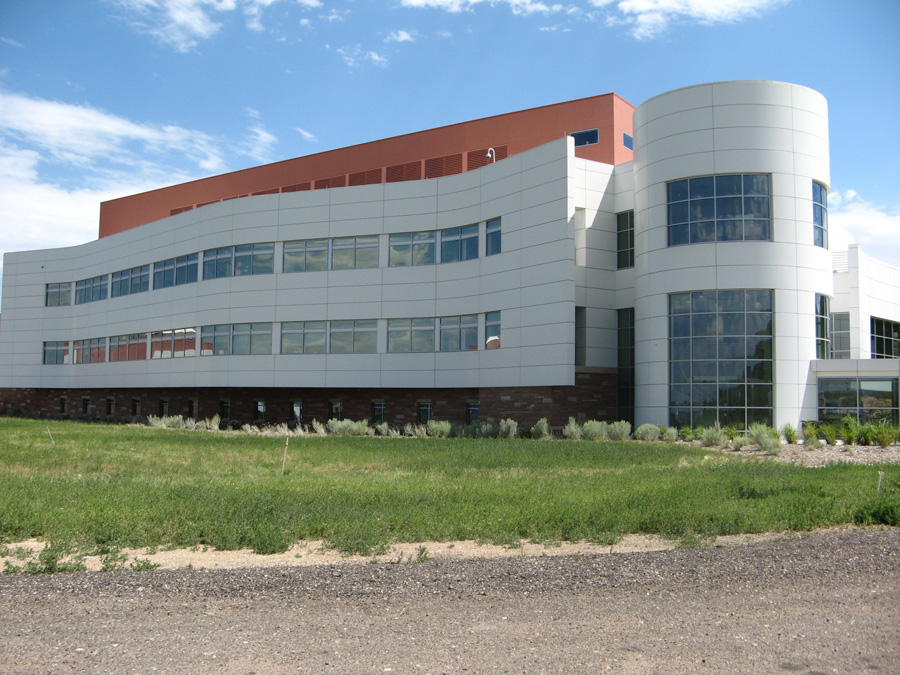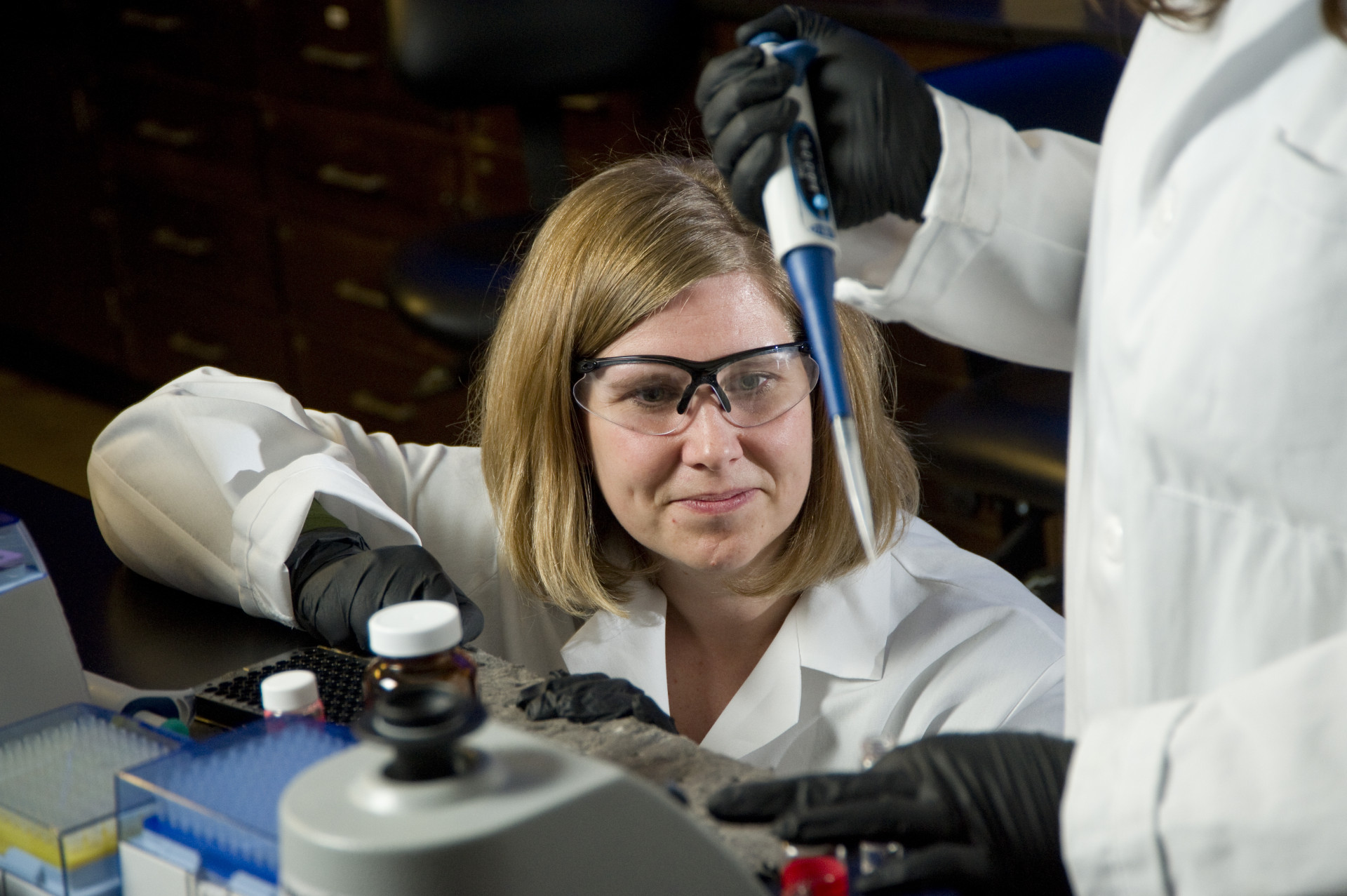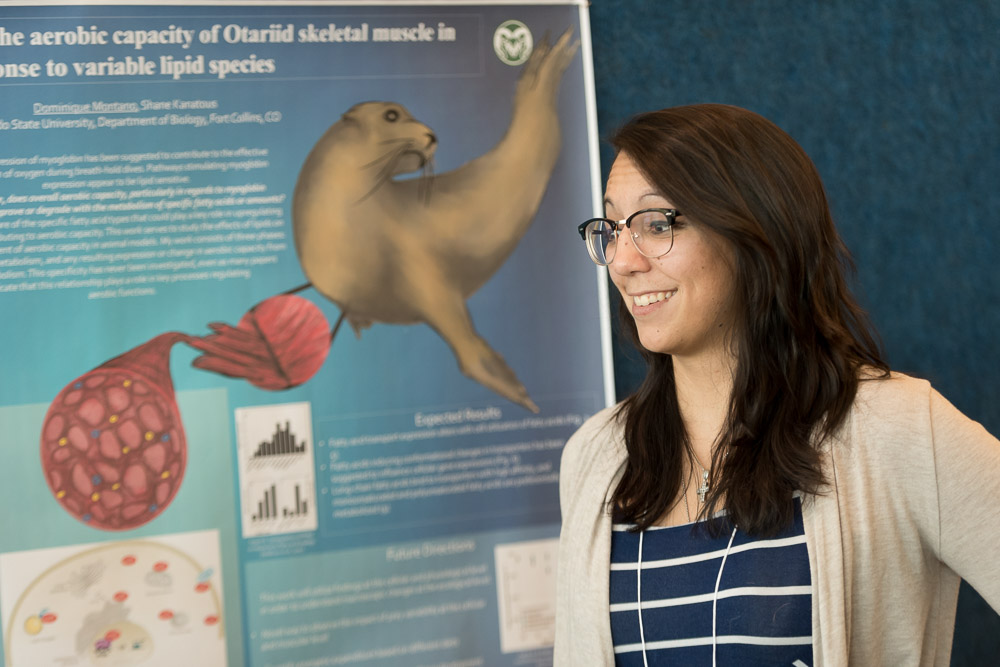
Research Innovation Center on the Foothills Campus.
Behind the record numbers of research expenditures, the numbers of patents awarded and industry partnerships launched stands an army of staffers and an array of programs dedicated to the continued success of researchers at Colorado State University.
From the president and provost and the vice president for research to the deans of the eight colleges and the graduate school, CSU administrators are always evaluating the research enterprise with an eye toward making the university the best place possible to work and learn. This includes upgrading infrastructure, recruiting and retaining outstanding experts in their fields, and nurturing a culture of collaboration across various disciplines.
The result is a number of initiatives to make professional life on campus rewarding for faculty at any stage of their careers.
Infrastructure
Among the new structures that made up CSU’s decade-long $1.6 billion building boom that began in 2008 were a number of state-of-the-art research facilities. The Department of Biology is finally housed under one roof, which also covers modern research labs deigned for collaboration. The new building next door is dedicated completely to chemistry research. Other areas of research that have benefited from the overall construction effort include animals sciences, translational medicine, horticulture, health and exercise science, renewable energy, equine reproduction, physics, bioengineering, atmospheric sciences and diagnostic medicine.
“We are excited to invest in our research infrastructure at CSU,” said Alan Rudolph, vice president for research. “Our great faculty thrive using state-of-the-art facilities and equipment for scholarly and research activities.”
The university has also committed to $1.5 million in improvements and renovations to existing research facilities through its Research and Scholarship Success Initiative. Projects selected for the first phase of RSSI, designed to stimulate further research opportunities, ranged from enhanced research spaces for computer science to converting existing space into a functional food laboratory for health clinical research. Weather radar applications and public lands history research also benefitted from this first round of upgrades.
The Research Core Facilities initiative supports foundational facilities that enable achievement through access to tools and expertise across the university. For example, the Emerging Innovation Core Facilities include the drone center, experimental pathology facility and the Institute for Research in the Social Sciences, while the Foundational Core Facilities are the Proteomic and Metabolomics Facility and the Franklin A. Graybill Statistical Laboratory, among others. Additional CORES facilities range from biosafety Level 3 labs and high performance computing to analytical services and 3D printing.
“The university is committed to helping our faculty with their research and discovery – a core tenet that makes Colorado State University what it is,” said Lynn Johnson, vice president for university operations. “It’s important to support those initiatives with facilities that provide scientists with the tools they need to be innovative and successful, as well as safe.”
The Office of the Vice President of Research has recently added a full-time staff position focused on enhancing the research safety culture at CSU. Anthony Appleton works with faculty, researchers and lab managers to strengthen procedures that ensure best practices are applied in all research settings on campus.

Collaboration
Modern facilities are only part of what lets creative research happen at CSU.
“We are strategic in our investments when it comes to developing the bricks and mortar of campus, and we should be no less strategic when it comes to growing our faculty and discovery capabilities,” said Provost Rick Miranda.
One way CSU has been growing those capabilities is through cluster hires – a targeted group of new faculty to help boost strategic initiatives.
“Cluster hiring gives us the ability to make targeted faculty appointments in areas that can provide a tremendous benefit to the University when it comes to research capabilities and the success of our students,” Miranda said. “I think everyone is extremely pleased with the outcome of the cluster hire initiative and excited for the potential we’ve created for coming up with innovative ways to overcome complex challenges.”
Past cluster hires have targeted aging research; microbiomes systems; and air quality, climate and health. This year’s hires are all post-docs, focused on research in the broad area of diversity and inclusion from the perspective of several colleges.
“Cluster hires provide researchers with high-caliber colleagues they might not otherwise have the opportunity to collaborate with,” Miranda added.
The Office of the Vice President for Research also supports interdisciplinary research teams tackling grand societal and scientific challenges through the Catalyst for Innovative Partnerships program. Every two years a group of research teams is seeded with $200,000 over two years and provided infrastructural support to seek partners and resources. These relationships nurture the creation and delivery of solutions in energy, health, and the environment.

Presenting at GradShow helps early career researchers build presentation skills.
Professional development
In addition to facilities and opportunities for collaboration, CSU also offers researchers a number of programs that enhance their professional skills beyond the laboratory.
The SoGES Sustainability Leadership Fellows program provides innovative training for early career scientists to effectively communicate science to the media and public, professional development skills and techniques, and strategies to build meaningful careers that incorporate engagement and interdisciplinarity. The competitive program accepts 20 advanced Ph.D. students and postdoctoral scholars each year from across campus interested in communicating their sustainability-related research. At the end of the program, Fellows are able to elegantly deconstruct, define, and communicate their research within the framework of broader global environmental sustainability challenges using cross-disciplinary and integrative thinking.
The Graduate School hosts a dozen professional development sessions each semester as part of the Graduate Professional Development Series, open to all students. Spring semester focuses on Career Paths and Searches and fall focuses on Personal and Professional Well-Being.
The Graduate Center for Inclusive Mentoring is also building a group of faculty who complete Center for the Improvement of Mentored Experiences in Research (CIMER) training and provide mentoring leadership across campus. It also supports the Grad Prep Academy with the CSU Cultural Centers, to help undergraduates of color consider continuing their education.
And for any faculty member in need of support while writing a paper, a proposal, a thesis or anything else, CSU Writes facilitates scholarly writing productivity and community, another program offered through the Graduate School.